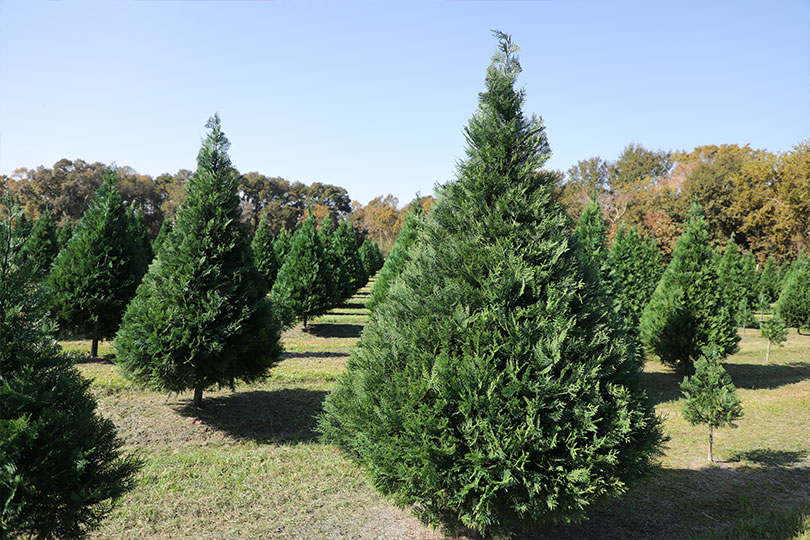By Shelby Shank
Field Editor
It’s a tradition in many households to have a real Christmas tree, filling the room with fragrant pine and the warmth of holiday spirit.
Every year in Texas, over four million real Christmas trees are sold, supporting farms and agricultural businesses across the Lone Star State.
Those sales also help boost the state economy.
A recent economic study conducted by the Texas A&M Forest Service found the Christmas tree industry adds substantial value to Texas’ economy. In 2022, the industry generated more than $714 million and supported nearly 6,000 jobs.
The U.S. Bureau of Labor Statistics estimated the Texas Christmas tree industry ranks second in the southern U.S. based on average annual employment and wages for 2022.
“The process of going as a family to pick out a tree is a fun activity that supports rural economies across the state,” said Dr. Aaron Stottlemyer, Forest Analytics department head for Texas A&M Forest Service. “There is a sense of pride in knowing that you have a Texas-grown Christmas tree.”
The traditional forestry industry accounts for $4.2 billion, noted Stottlemyer. Much of that is for lumber and building panel, but he added Christmas trees are a growing sector in Texas forestry.
The first Christmas tree planted in Texas was in 1935 in Jasper.
Since the 1970s, institutions like Texas A&M Forest Service, Texas A&M University and Stephen F. Austin State University have worked to optimize the health and growth of Christmas tree species in Texas.
“Some species of Christmas trees are not grown in Texas because of the growing conditions down here,” Stottlemyer told the Texas Farm Bureau Radio Network. “The warm temperatures we have here make it difficult for some species to grow, but some varieties like Afghan pine and Arizona cypress do really well in Texas.”
Other varieties of Texas Christmas trees are the Virgina pine, eastern red cedar, shortleaf pine and Leyland cypress.
Harvesting Christmas trees is essential for the ecosystem and forest sustainability. According to Stottlemyer, the Christmas tree industry is crucial to fulfilling the trees’ lifecycle, expanding trees’ potential beyond their natural life and creating sustainable forests and economies.
“Christmas tree farms are essentially young forests,” Stottlemyer said. “They are able to provide us the same benefits as traditional forests by sequestering carbon, providing a natural habitat for wildlife, cleaning our water and providing recreational opportunities.”
After the holiday season is over, real Christmas trees can be repurposed and recycled for various uses, such as landscape mulch in yards, soil in gardens for erosion prevention, nest-building materials for birds and natural water habitats for fish and wildlife in ponds and lakes.


Leave A Comment